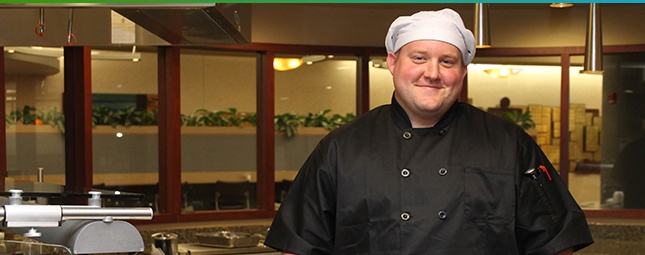Reid Health: From $1,400 Per Week in Food Waste to $600 and Dropping

Central Indiana-based Reid Health is an independent, non-profit hospital with a broad and unique foodservice operation. The 207-bed hospital’s central kitchen doesn’t just feed patients and supply it’s cafe -- about 3,600 meals a day -- it also services a local Meals on Wheels, provides meals for the county Head Start program, and feeds children at a local residential facility. On top of that? Internal and external catering.
“We do weddings,” explains Reid’s Director of Food and Nutrition Services Kris Ankeny.
In the fall of 2016, Ankeny arranged to donate unused food to local soup kitchens. “That was the first time that we really saw how much we were overproducing,” she says. “Before that it was just going down the garbage disposal.”
At the end of 2016, the hospital installed a LeanPath 360 in its central kitchen. There have been many food waste reduction successes since then, but the simplest way to understand it, as Ankeny says, is that while they were donating three times a week to soup kitchens last year, now they donate once a week.
More to the point, Ankeny’s food costs have dropped 7 percent year over year.
Zeroing in On Waste
When Reid began using LeanPath, they were tracking $1,400 a week in food waste. They have gotten that down to $600-$700, with a goal of $500 per week.
They have used a number of strategies to achieve that success.
First, they put together a team to lead the program, including Ankeny, the central kitchen chef, the head of procurement, and the cafe manager, who meet once a week to set and review goals.
Next, they got the kitchen staff engaged with a “Help us Get to Zero Waste” promotion: track food waste just once with LeanPath and you’d win a Zero candy bar.
Then they focused on their LeanPath data, honing in on high cost, high waste items. Top of the list was boneless chicken.
“Chicken strips are the number one seller in the cafe, and we used to just fry bag after bag, even at the end of a meal period we’d throw a whole bag in,” Ankeny says. Now staff have a form to track when they fry more chicken, holding them accountable for overproduction. They also fry in smaller batches.
Shrinking batch size played out in their effort to reduce vegetable waste too. Ankeny changed up purchasing, buying 2-pound frozen bags instead of 25-pound bulk boxes of steamed vegetables. Preparing these smaller batches reduced waste, but also allowed for fresher-tasting veggies. Smaller batches led to a $1,000 savings in mashed potato waste over just two months.
Finally, Reid has leveraged the photographs the LeanPath 360 captures, which proved particularly valuable since the kitchen’s third shift isn’t staffed with a manager. They can review photographs of wasted food even if they aren’t there at the time. They found a lot of food was being wasted because it was overcooked. More training was initiated and food waste dropped.
The focus on food waste reduction has led to other changes: the hot bar cycle menu was shortened from four weeks to two; soup offerings shrunk from three to two; cookie variety went from seven to four. Also, the cafe manager who used to prioritize never running out of product, has reprioritized food waste, understanding that an occasional missing item is better than overproduction.
To get down to that $500 per week goal, they’re next focusing on sliced meat and reductions they can make in catering.
“LeanPath is a wonderful management tool,” says Ankeny. “Maybe some operations do a better job of post-production record keeping, but I realize now we did a poor job. Now I can save 7 percent on my food budget, and my food budget is very big. Seven percent is a significant chunk of change.”